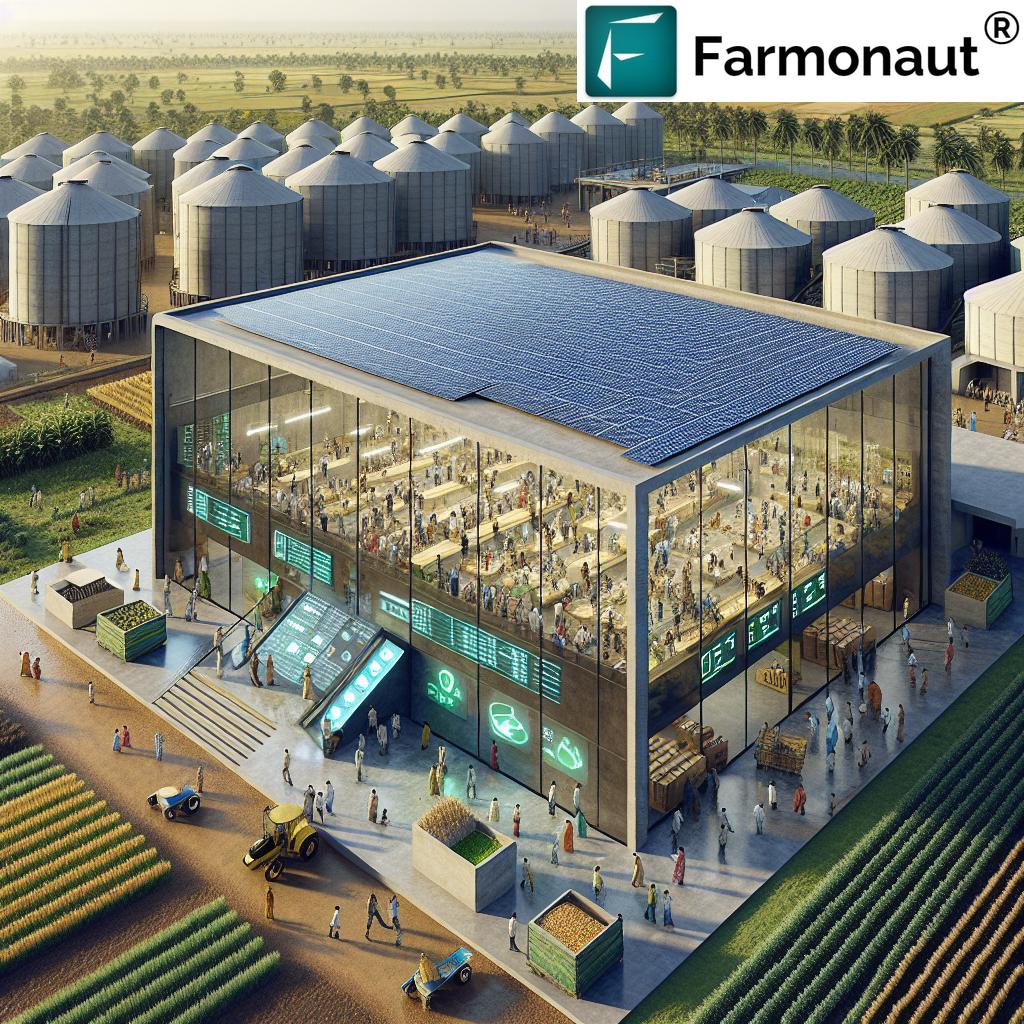Revolutionizing Agricultural Procurement: How India’s Price Support Scheme Empowers Farmers and Stabilizes Income
“India’s Price Support Scheme covers over 20 agricultural commodities, including oilseeds, pulses, and cotton.”
In the vast agricultural landscape of India, a revolutionary transformation is underway. The agricultural price support scheme, coupled with cooperative marketing initiatives, is reshaping the farming sector across the nation. From the lush fields of the North to the fertile plains of the South, and from the Eastern paddy lands to the Western cotton belts, a new era of farmer empowerment and income stabilization is dawning.
In this comprehensive blog post, we’ll delve into the intricate workings of procurement operations for vital crops such as oilseeds, pulses, and cotton. We’ll explore how the minimum support price system acts as a safety net for millions of farmers, ensuring fair compensation for their hard work and dedication. Join us as we uncover the latest trends in organic farming, fertilizer usage, and sustainable practices that are propelling India’s agricultural productivity to new heights.
The Foundation of Agricultural Price Support in India
The agricultural price support scheme in India is a cornerstone of the nation’s agrarian policy. It serves as a vital mechanism to protect farmers from market volatilities and ensure a stable income. Let’s break down the key components of this scheme:
- Minimum Support Price (MSP): The government sets a minimum price for various agricultural commodities, guaranteeing farmers a fair return on their produce.
- Procurement Operations: Government agencies purchase crops directly from farmers at the MSP, creating a safety net against price fluctuations.
- Crop Diversification: The scheme encourages farmers to grow a variety of crops by offering support for multiple commodities.
The impact of this scheme extends far beyond individual farmers, influencing the entire agricultural ecosystem and contributing to national food security.
Cooperative Marketing: A Pillar of Agricultural Progress
Cooperative marketing in agriculture has emerged as a powerful force in India’s farming sector. This collective approach offers numerous benefits:
- Enhanced bargaining power for farmers
- Reduced intermediaries in the supply chain
- Improved access to markets and information
- Shared resources and reduced operational costs
By fostering cooperation among farmers, these initiatives are creating a more resilient and efficient agricultural market structure.

Oilseed and Pulse Procurement: Securing Food and Nutrition
The procurement of oilseeds and pulses plays a crucial role in India’s agricultural strategy. These crops are not only essential for food security but also contribute significantly to farmers’ incomes. Here’s how the procurement process works:
- Farmers bring their produce to designated procurement centers.
- The quality of the crops is assessed based on Fair Average Quality (FAQ) standards.
- Crops meeting the standards are purchased at the MSP or above.
- Payments are made directly to farmers’ bank accounts, ensuring transparency and efficiency.
This systematic approach has led to increased production of oilseeds and pulses, reducing import dependency and boosting farmer confidence.
Cotton Procurement: Weaving a Better Future for Farmers
Cotton, a critical cash crop for many Indian farmers, has seen significant improvements in procurement processes. The Cotton Corporation of India (CCI) plays a pivotal role in this sector:
- Implementing MSP for cotton across major growing regions
- Conducting quality assessments to ensure fair pricing
- Facilitating market linkages for cotton farmers
- Promoting sustainable cotton farming practices
These initiatives have not only stabilized cotton prices but have also encouraged farmers to adopt better cultivation techniques, leading to improved yields and quality.
“The Minimum Support Price system in India has been implemented for more than 50 years, stabilizing farmer incomes since the 1960s.”
Digital Revolution in Agricultural Transactions
The integration of digital payment systems in agricultural transactions is transforming the way farmers interact with markets. This technological leap offers several advantages:
- Instant and secure payments directly to farmers’ accounts
- Reduction in cash handling and associated risks
- Enhanced transparency in procurement processes
- Improved financial inclusion for rural communities
The adoption of digital payments is not just a convenience; it’s a catalyst for broader financial empowerment in rural India.
Fair Average Quality (FAQ) Standards: Ensuring Quality in Agricultural Markets
The implementation of Fair Average Quality standards has been a game-changer in agricultural commodity markets. These standards:
- Provide a benchmark for crop quality assessment
- Ensure fair pricing based on objective criteria
- Encourage farmers to adopt better farming practices
- Facilitate smoother transactions in agricultural markets
By adhering to FAQ standards, farmers can command better prices for their produce, while buyers are assured of quality.
Regional Dynamics of Agricultural Support Schemes
The impact of agricultural support schemes varies across different regions of India. Let’s explore how these initiatives are shaping farming practices from North to South and East to West:
North India
- Focus on wheat and rice procurement
- Strong network of agricultural cooperative societies
- High adoption rate of mechanized farming
South India
- Emphasis on rice, pulses, and spices
- Advanced horticultural practices
- Leading in organic farming initiatives
East India
- Predominant rice cultivation
- Growing focus on oilseed production
- Initiatives to improve irrigation infrastructure
West India
- Major cotton and groundnut producing region
- Innovative dryland farming techniques
- Emphasis on water conservation methods
This regional diversity underscores the need for tailored approaches in implementing agricultural support schemes across India.

Organic Farming: A Growing Trend in Indian Agriculture
Organic farming is gaining significant traction in India, supported by government initiatives and changing consumer preferences. Key aspects include:
- Promotion of chemical-free farming practices
- Development of organic certification processes
- Creation of specialized markets for organic produce
- Integration of organic farming in price support schemes
This shift towards organic farming not only benefits the environment but also opens up new premium markets for Indian farmers.
Fertilizer Usage and Sustainable Practices
Balancing fertilizer usage with sustainable agricultural practices is crucial for long-term productivity. India is making strides in this direction through:
- Promotion of balanced fertilizer use
- Subsidies for bio-fertilizers and organic inputs
- Research and development in sustainable nutrient management
- Farmer education programs on soil health
These initiatives are helping to maintain soil fertility while reducing the environmental impact of agriculture.
Technological Innovations in Agricultural Management
The integration of technology in agriculture is revolutionizing farm management practices. Key technological advancements include:
- Satellite-based crop monitoring systems
- AI-driven advisory services for farmers
- Blockchain technology for supply chain transparency
- IoT devices for precision agriculture
These technologies are empowering farmers with data-driven insights, leading to more efficient resource utilization and improved yields.
For cutting-edge satellite-based farm management solutions, explore Farmonaut’s web app. Our platform offers real-time crop health monitoring, AI-based advisory systems, and resource management tools to optimize your agricultural operations.
The Role of Agricultural Cooperatives in Market Stabilization
Agricultural cooperatives play a vital role in stabilizing markets and empowering farmers. These organizations:
- Aggregate produce from small and marginal farmers
- Provide collective bargaining power in the market
- Offer storage and processing facilities
- Facilitate access to credit and inputs
By strengthening cooperative networks, India is creating a more resilient and equitable agricultural ecosystem.
Challenges and Future Prospects
While the agricultural price support scheme has brought significant benefits, it also faces challenges:
- Balancing support prices with market dynamics
- Ensuring efficient storage and distribution of procured crops
- Addressing regional disparities in scheme implementation
- Adapting to changing climate patterns and water scarcity
Addressing these challenges will be crucial for the continued success and evolution of India’s agricultural support system.
Comparative Analysis of Agricultural Price Support Schemes in India
| Region | Major Crops | MSP (INR/quintal) | Procurement Quantity (MT) | Digital Payment Adoption (%) | FAQ Standards | Farmer Income Impact (%) |
|---|---|---|---|---|---|---|
| North | Wheat, Rice | 1975 (Wheat) | 34.13 million | 85% | Strict | +12% |
| South | Rice, Pulses | 1940 (Rice) | 21.76 million | 78% | Moderate | +9% |
| East | Rice, Oilseeds | 1940 (Rice) | 18.47 million | 65% | Flexible | +7% |
| West | Cotton, Groundnut | 5550 (Cotton) | 9.25 million | 72% | Strict | +10% |
Note: Data is representative and may vary based on specific states and crop seasons.
Leveraging Technology for Agricultural Advancement
In the digital age, technology plays a pivotal role in advancing agricultural practices. Farmonaut’s innovative solutions are at the forefront of this technological revolution:
- Satellite-Based Crop Monitoring: Real-time insights into crop health and soil conditions
- AI-Driven Advisory Systems: Personalized recommendations for optimal farm management
- Blockchain-Based Traceability: Ensuring transparency and authenticity in agricultural supply chains
- Resource Management Tools: Efficient allocation and utilization of agricultural resources
Explore Farmonaut’s cutting-edge agricultural technology solutions:
For developers interested in integrating agricultural data into their systems, check out our API and API Developer Docs.
Conclusion: A Brighter Future for Indian Agriculture
The agricultural price support scheme, coupled with cooperative marketing and technological advancements, is paving the way for a more prosperous and sustainable farming sector in India. By ensuring fair prices, promoting sustainable practices, and leveraging cutting-edge technology, India is not only securing its food future but also empowering millions of farmers across the nation.
As we look to the future, the continued evolution of these support systems, coupled with technological innovations, will be crucial in addressing the challenges of climate change, resource scarcity, and market volatilities. The journey towards a more resilient and productive agricultural sector is ongoing, and with the right strategies and tools, India is well-positioned to lead the way in global agricultural innovation.
FAQ Section
- What is the Minimum Support Price (MSP)?
The MSP is a government-set price at which it procures specified agricultural commodities directly from farmers, ensuring a minimum guaranteed price for their produce. - How does the agricultural price support scheme benefit farmers?
It provides income stability, reduces market risks, encourages crop diversification, and ensures fair compensation for farmers’ produce. - What role do agricultural cooperatives play in the support scheme?
Cooperatives aggregate produce, provide collective bargaining power, offer storage facilities, and facilitate access to markets and resources for farmers. - How is technology transforming agricultural procurement in India?
Technology is enabling real-time crop monitoring, efficient resource management, transparent transactions through digital payments, and data-driven decision-making in agriculture. - What are Fair Average Quality (FAQ) standards?
FAQ standards are quality benchmarks set for agricultural commodities to ensure fair pricing and maintain quality in the procurement process.










